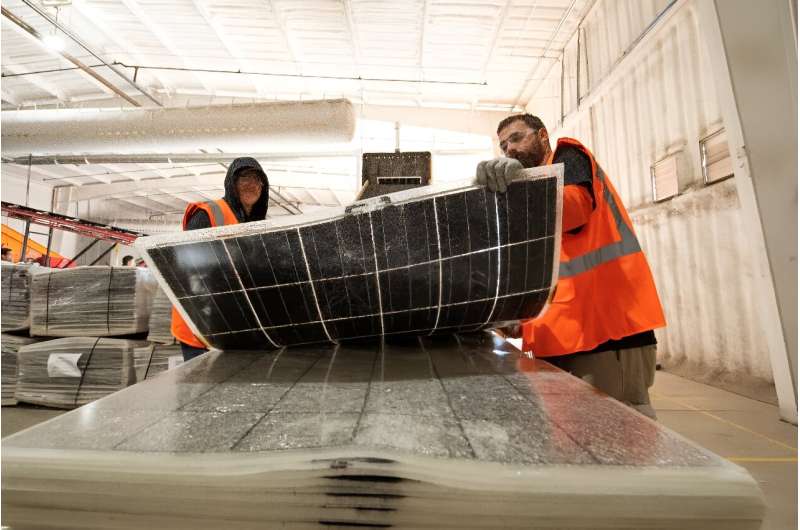Workers push damaged solar panels into machines for recycling at the We Recycle Solar plant in Yuma, Arizona.
As the world shifts from fossil fuels that contribute to planet warming to renewable energy, a new pollution problem is emerging: What to do with old or worn-out solar panels?
Thousands of photovoltaic panels are being installed across the country every day, especially in the sunny West and South, as states like California race to pursue green energy production.
But with an expected lifespan of about 30 years, the first solar installations are now nearing the end of their useful life, sparking a rush to recycle items that might end up in landfill.
“The coming tsunami of solar panels is going to come back into the supply chain,” said Adam Saghei, CEO of We Recycle Solar in Arizona.
“One of the challenges for any industry is that there isn’t much planning for the circular economy.
“(Solar) is a sustainable form of energy; there needs to be a plan to retire these assets.”
Sage’s plans include reusing panels, among other things.
Anywhere up to five percent of panels either have minor manufacturing defects or are damaged during shipping or installation.
The panels that are still in use can be refurbished and moved to other markets, usually abroad, Sage said.
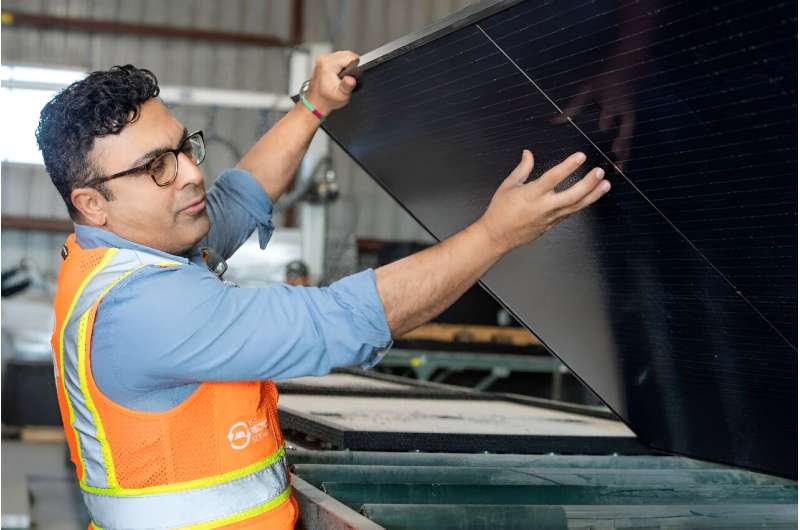
Adam Saghei, CEO of We Recycle Solar, displays damaged solar panels for recycling at a factory in Yuma, Arizona.
But there are treasures to be found in those panels that no longer function because they have aged, or were damaged during installation, or have been smashed by hail.
“We’re doing what’s called urban mining,” Sage said, referring to a process that took his engineers three years to perfect.
The mining recovers silver, copper, aluminum, glass and silicone, all commodities that have value on the open market.
While the use of metal may be obvious, the use of silicone and glass is less obvious, but still interesting.
“You can use it for golf course sand traps, you can refine it into a sandblasting mix, you can use it for a stone or glass mix for an outdoor fireplace,” Sage said.
The Yuma plant can process up to 7,500 panels per day, but surprisingly little is wasted.
“Depending on the make and model of the panel… we can achieve recycling rates of up to 99 percent.”
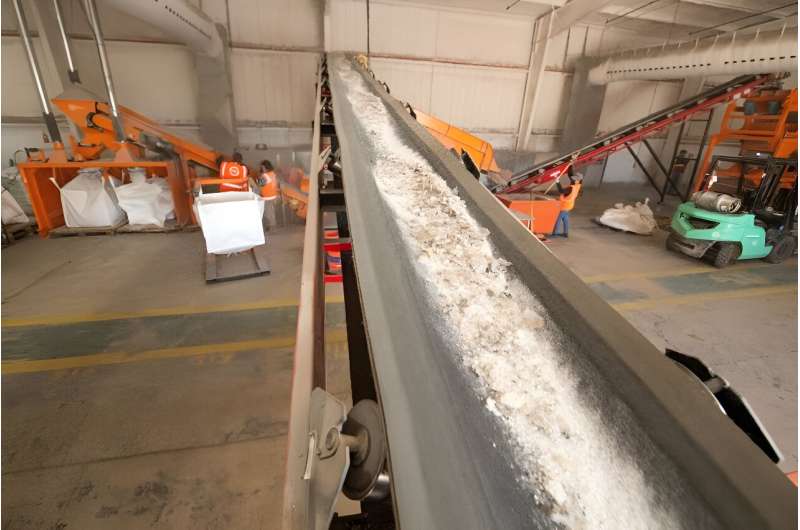
Various metals can be recycled from broken solar panels.
logistics
For Meng Tao, an expert on sustainable energy infrastructure at Arizona State University, developing efficient life cycles for solar panels is an urgent issue.
Solar panel installations look set to peak in two decades as countries such as the United States commit to weaning themselves off fossil fuels after signing the landmark COP28 climate deal.
“Once mature, the annual installation and decommissioning will be roughly the same,” he told AFP.
“But over the next 20 years… at least for the next 10 years… we’re going to have more installations than retirements.”
The problem with recycling, he said, is not only the relatively low value of the material recovered from the panels, but also the logistics.
Because the panels are distributed across thousands of sometimes distant rooftops, simply transporting them to recycling centers can cost a lot of money.
-
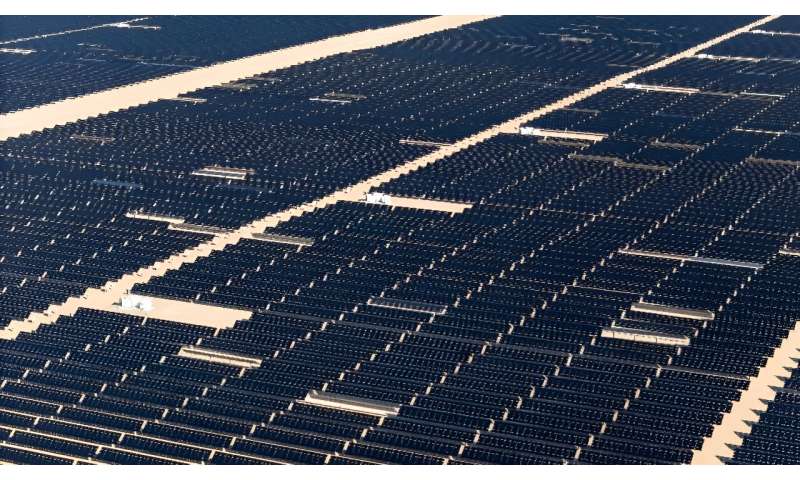
Solar panels have an expected lifespan of about thirty years before they are recycled or sent to a landfill.
-
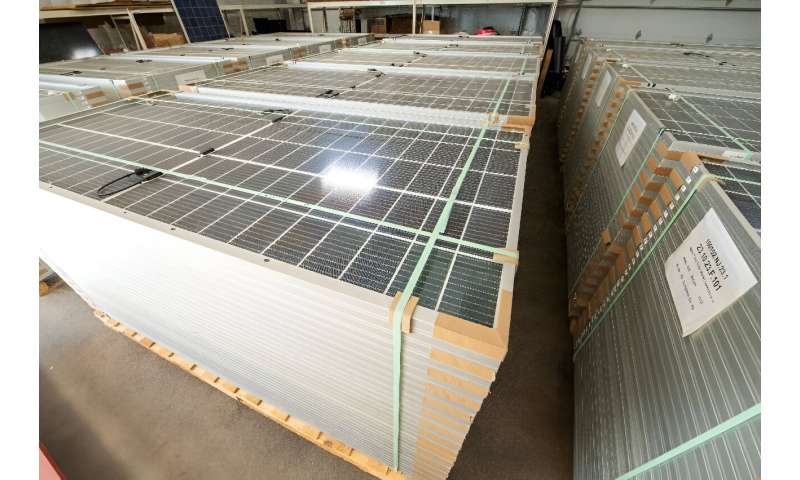
Recycled solar panels are ready for shipment to the We Recycle Solar facility in Yuma, Arizona on December 6, 2023.
-
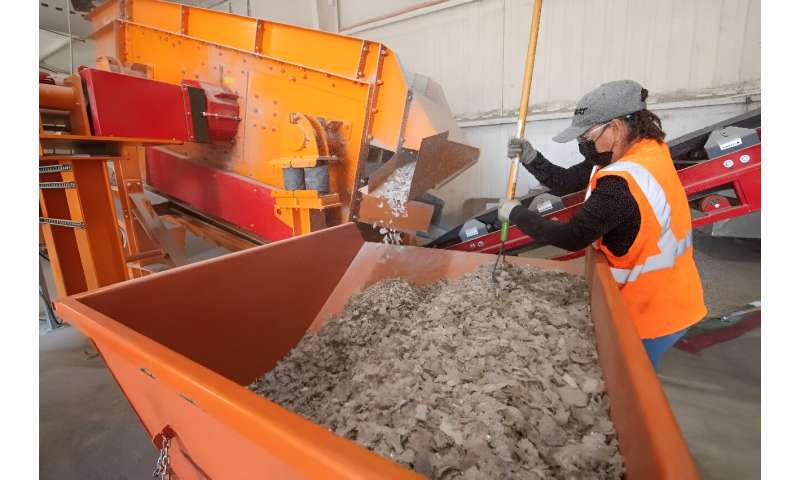
One problem is that the material recycled from old solar panels has little economic value.
Unlike some jurisdictions, the United States imposes removal and recycling fees on end users, making it more attractive for households to dump old equipment in local landfills.
“There has to be some policy support” to bridge the gap between what consumers pay and the total life-cycle cost of the panels, Tao said.
growing market
For Saghei, as for any business leader, profitability is important.
“You’re not going to see too many people entering this industry because recycling has a cost. It’s not free. It’s labor-intensive. It’s energy-intensive,” he said.
But he does see a path forward.
She was convinced that recycling materials from old solar panels that could be reused in new solar panels was a winning proposition.
“These markets are growing,” he said.
“Through this process, once the industry scales up to a larger scale, we will be able to integrate these raw materials back into the supply chain.
“What’s exciting is that we’re at the forefront.”
2023 AFP
citation: “Urban Mining” Provides Green Solution for Old Solar Panels (2023, December 23), Retrieved December 24, 2023 from https://techxplore.com/news/2023-12-urban-green-solution -solar-panels.html
This document is protected by copyright. No part may be reproduced without written permission except in the interests of fair dealing for private study or research purposes. Content is for reference only.
#Urban #mining #green #solutions #solar #panels
Image Source : techxplore.com
